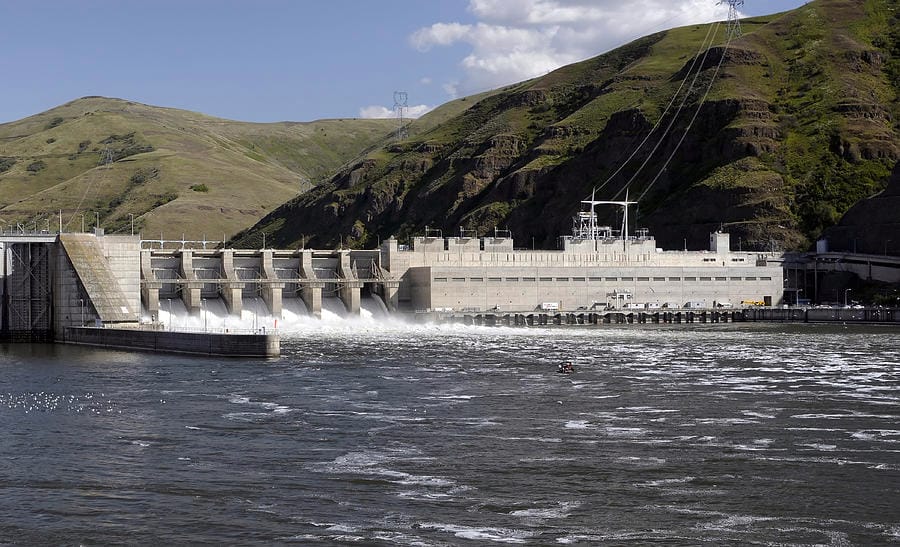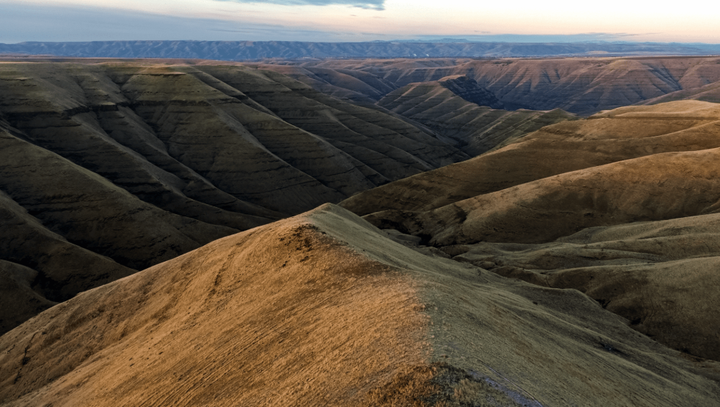What the River Remembers

The Fight for the Lower Snake, and the Future of the Land It Fed
The Lower Snake does not rage. It does not roar. But it endures.
Along its quiet bends near Lower Granite Dam, where slackwater curls around concrete and turbines hum without notice, the river moves with the weight of what was lost. It once fed villages, carried canoes, and welcomed the salmon home. Now it moves slowly past concrete walls that were never meant to last forever.
Chairman Samuel Penney of the Nez Perce Tribal Executive Committee, long attuned to the river’s seasons, reflected last winter on stories passed down through generations, memories of a time when the Snake ran free. "The dams have decimated our salmon," he said. "This is not just an environmental issue. It’s a justice issue, a tribal sovereignty issue, a survival issue."
This fight is not new. But the urgency has changed.
The Dams That Changed Everything
In December 2023, the Biden administration released a framework recognizing the need to transition away from the four aging dams that choke the Lower Snake: Ice Harbor, Lower Monumental, Little Goose, and Lower Granite. The plan offered hope to the tribes, environmentalists, and fishermen who have spent decades calling for restoration.
Then, in June 2025, it was halted.
President Trump, standing alongside allies from the oil and gas sector and backed by hardline Republican lawmakers, signed a memo scrapping the plan. "Radical environmentalism,” he called it. Among those clapping in the front row: Representative Michael Baumgartner of Washington’s 5th District.
The dams, some say, are essential. To energy. To agriculture. To tradition.
But not all traditions are meant to last.
This is the story of a region faced with a choice: to defend outdated infrastructure or to restore a river that still waits to live again.
The four concrete giants of the Lower Snake (Ice Harbor, Lower Monumental, Little Goose, and Lower Granite) were built between 1962 and 1975. At the time, they were sold to the public as a promise of progress: cheap electricity, a navigable river, and a boost for inland agriculture. But the cultural, ecological, and human costs disappeared under the reservoirs they left behind.
Each dam drowned a portion of a once-free-flowing river. Ancient fishing sites, sacred gathering grounds, and entire tribal landscapes were lost. Salmon runs, already declining from upstream development, collapsed further as turbines and slackwater disrupted spawning routes. What was once a seasonal migration became a slow, quiet die-off.
The Nez Perce, Yakama, Umatilla, and Warm Springs tribes never agreed to the trade. Their treaty rights, upheld by federal law, promised access to salmon-bearing waters. Instead, they were given a system of mitigation: hatcheries and barging programs that failed both ecologically and morally.
By the early 2000s, the dams’ mechanical lifespans were already in question. Today, they are all past 50 years old. Turbines wear down. Sediment builds. Costs climb.
The dams have now either reached or exceeded their expected service lives. Their turbines, generators, and spillways were built for mid-20th-century needs, not 21st-century reliability. Experts warn that without major upgrades, the dams will soon be unable to operate reliably. Their core systems are aging past the point of viability, and the cost of rehabilitation now rivals the cost of removal. Federal analysts and retired engineers have warned: these dams are aging into obsolescence.
What was once a symbol of American engineering has become a liability aging in place.
The question now is not whether these dams can last forever. It’s whether they should.
The Economic Case for Letting Go
The continued defense of the Lower Snake River dams as valuable infrastructure rests more on perception than reality, and it comes at extraordinary public cost. Federal data now pegs their annual operation and maintenance at $269 million. Layered on top is another $194 million each year in salmon mitigation, primarily hatcheries and barging programs that, despite decades of funding, have failed to restore wild salmon and have drawn increasing ecological scrutiny. That’s nearly half a billion dollars a year for infrastructure that no longer meets its promise.
Even by conservative accounting, the math for the combined effort is stark. Independent economists have determined that for every dollar spent keeping the dams in place, taxpayers receive just fifteen cents in return. The benefit-cost ratio, 0.15, is among the worst in the federal hydropower system. In contrast, studies show removing the dams and restoring the river could return $4.30 in benefits for every dollar spent. One federal study projected a $4.2 billion net gain over thirty years.
Supporters, however, argue that the dams are too central to lose. But the data says otherwise. Hydropower from the Lower Snake can be replaced through a combination of energy efficiency, renewable generation, battery storage, and regional transmission upgrades. Each solution is already modeled and proven feasible in multiple federal and independent studies. Rail is prepared to absorb displaced barge traffic. Irrigation access is limited and can be replicated. What cannot be replaced is the salmon, the treaties, and the integrity of the river itself.
Defiance Over Data
Representative Michael Baumgartner has made his position clear. “They’re not going anywhere,” he said of the Snake River dams during his 2024 campaign. After taking office, he doubled down, aligning himself with Project 2025 and celebrating President Trump’s June 2025 rollback of the Biden administration’s dam transition plan. While tribal nations and independent economists call for data-driven restoration, Baumgartner offers applause.
His defense of the dams relies less on policy than on performance and cultural signaling. He casts the debate as a clash between traditional infrastructure and environmentalism, echoing the rhetoric used by Trump to justify halting the dam removal plan. It is a posture rooted in political theater more than economic or ecological reality. The numbers, the science, and the treaties tell a different story. Yet in Eastern Washington, defiance still resonates more powerfully than reflection.
If Baumgartner’s position has a constituency, it is not the river, the fish, or the tribes. It is the narrative that environmentalism is the greater threat, especially when Trump is listening.
The Truth About Agriculture
Both Donald Trump and Rep. Michael Baumgartner have claimed that removing the dams would devastate agriculture in the region. Trump said breaching the dams would "starve our farmers," and Baumgartner called the dams "the spine of our ag economy."
But the facts do not support their claims.
Only a small percentage of Washington wheat is shipped via Lower Snake River barges; estimated at 4 to 6 percent. Irrigation access tied directly to these dams is minimal and can be replaced through modern infrastructure. In fact, respected Eastern Washington wheat grower Bill Flory has said that agriculture can adapt if investments are made. Eric Jessup, a WSU transportation economist, has urged policymakers to conduct an objective review of how to shift grain transport from barge to rail. He has called for facts over fear in shaping the region’s agricultural future.
The idea that removing the dams will collapse farming is not just an exaggeration It’s a falsehood, used to mask a deeper culture war.
A River’s Last Stand
For the Nez Perce and other tribes of the Columbia Basin, the Snake River is not just a waterway. It is kin. It shaped their migration patterns, ceremonies, diets, and stories. Its loss was not theoretical. It was felt in empty smokehouses and broken treaty promises.
Now, tribal leaders, legal advocates, and a new generation of Indigenous youth are leading the fight to restore the river’s flow. Organizations like Nimiipuu Protecting the Environment have mobilized around a single goal: breach the dams, revive the salmon, and heal the land. As tribal member Julian Matthews put it, “We’ve lived with these dams longer than they were ever supposed to last. It’s time to let the river live again.”
They are not alone. Scientific consensus, legal precedent, and economic modeling all increasingly align with the tribal call for river restoration. What was once dismissed as activism is now the most pragmatic path forward.
And still, the river waits.

